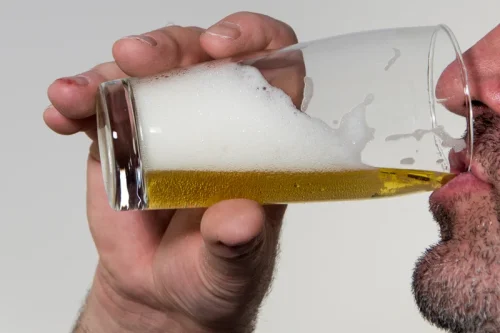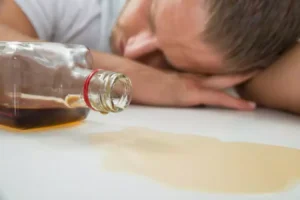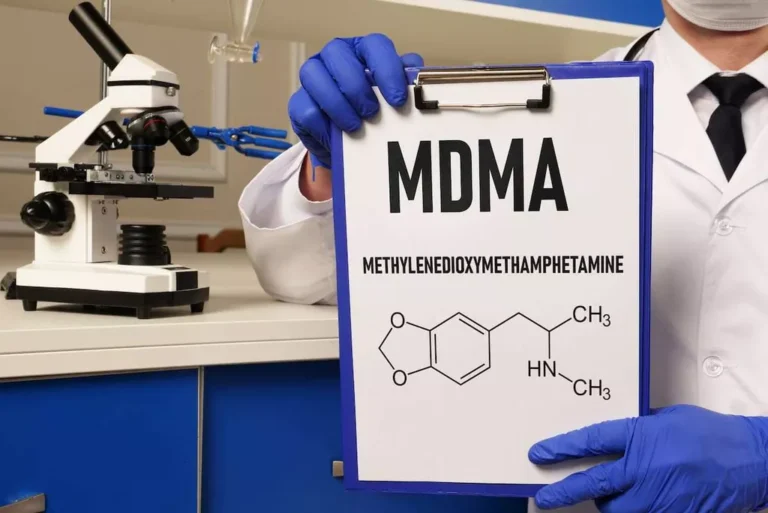
Too much inhibition and you will experience effects like sedation and depression. Nial Wheate in the past has received funding from the ACT Cancer Council, Tenovus Scotland, Medical Research Scotland, Scottish Crucible, and the Scottish Universities Life Sciences Alliance. He is a Fellow of the Royal Australian Chemical Institute, a member of the Australasian Pharmaceutical Science Association, and a member of the Australian Institute of Company Directors. Nial is the chief scientific officer of Vaihea Skincare LLC, a director of SetDose Pty Ltd a medical device company, and a Standards Australia panel member for sunscreen agents. Nial regularly consults to industry on issues to do with medicine risk assessments, manufacturing, design, and testing. If you had an alcoholic beverage and are not sure if you should take an OTC pain reliever, you can ask a local pharmacist or primary care provider if it is safe to do so.
What drugs can’t you mix with alcohol?

The mystery of Whitney Houston’s death will not be solved for several weeks, as the Los Angeles County Coroner’s Office awaits a full toxicology report. But many experts speculate that the singer’s tragic demise involved a deadly cocktail of alcohol and prescription drugs, including Xanax. It is believed that the main reason the Sinclair Method has not caught on in the U.S. is two-fold. In the U.S., 12-step programs based on abstinence seem to dominate treatment plans prescribed by doctors, and doctors do not like that the Sinclair Method encourages people with alcohol dependency problems to continue drinking. With the Sinclair Method, Revia or Vivitrol is taken one hour before drinking alcohol.
How to Prevent a Dangerous Interaction

After about 1 week of therapy, when the patient is scheduled to stop smoking, initiate transdermal nicotine therapy at a dosage of 21 mg/24 hours. Cessation of smoking is unlikely in patients who do not show substantial progress toward abstinence after 7 weeks of therapy, so such therapy generally should be discontinued at that time in these patients. Continue therapy for 7–12 weeks; evaluate need for prolonged therapy after that period based on individual patient assessment.
- If you take prescription medication or use a specific medication every day, ask your doctor if it is okay for you to drink alcohol.
- The FDA approved them to treat seizures, but health care professionals sometimes prescribe them “off-label” for alcohol use disorder.
- When you have alcohol use disorder, just thinking about alcohol triggers a pleasurable response in the brain.
- Bupropion hydrobromide doses of 174, 348, or 522 mg are equivalent to bupropion hydrochloride doses of 150, 300, or 450 mg, respectively.
- Some research has found that alcohol does not appear to worsen liver inflammation in certain people who take medication for their cholesterol.
Advice to Patients

Common side effects of naltrexone may include nausea, headache, dizziness, and sleep problems. Two other drugs, gabapentin and topiramate, also interact with GABA and glutamate systems. The FDA approved them to treat seizures, but health care professionals sometimes prescribe them “off-label” for alcohol use disorder. However, even medications that don’t require a prescription can be unsafe when mixed with alcohol. For example, OTC painkillers (including nonsteroidal anti-inflammatory drugs) can cause a range of symptoms from gastrointestinal upset to bleeding and ulcers in the stomach to tachycardia (racing heart).
Coping and support
They also spend a great deal of time drinking alcohol, and obtaining it. Alcohol abusers are “problem drinkers”, that is, they may have legal problems, such as drinking and driving, or binge drinking (drinking six or more drinks on one occasion). People who are dependent on or abuse alcohol return to its use despite evidence of physical or psychological problems, though those with dependence have more severe problems and a greater compulsion to drink. In closing, combining alcohol with certain medications, particularly those with sedative effects, can increase the risk of adverse events, including falls, driving accidents, and fatal overdoses. The more alcohol a patient consumes, the greater the risk for alcohol and medication interactions. Universal screening, careful prescribing choices, and patient education can help minimize the risks of combining alcohol with certain medications.
SAMHSA’s mission is to lead public health and service delivery efforts that promote mental health, prevent substance misuse, and provide treatments and supports to foster recovery while ensuring equitable access and better outcomes. This announcement includes more than $16 million for behavioral and primary health care integration and more than $24 million to expand capacity for drug treatment courts. Talk to your healthcare provider or pharmacist about the types of medication you are taking and how they interact with alcohol. If you’re taking medication and you don’t know how it reacts to alcohol, don’t consume alcohol.
Recognizing unhealthy drug use in family members
For patients receiving 348 mg once daily during the autumn-winter period, taper dosage to 174 mg once daily prior to discontinuance. After 7 days of dosing, may increase to target dose of 348 mg once daily in the morning. For patients receiving 300 mg once daily during the autumn-winter period, Alcohol and Pills taper dosage to 150 mg once daily prior to discontinuance. Bupropion hydrobromide doses of 174, 348, or 522 mg are equivalent to bupropion hydrochloride doses of 150, 300, or 450 mg, respectively. Treatment of patients with bipolar depression† [off-label] (bipolar disorder, depressive episode).
- Drinking alcohol with this medicine may increase your chance of having liver problems or make your liver problems worse.
- International bupropion pregnancy registry was not designed or powered to evaluate specific defects; however, possible increase in cardiac malformations identified.
- “And for many individuals, that spike has been maintained,” says Lara Ray, a professor of psychology and psychiatry at the University of California, Los Angeles and a coauthor on the study.
False-positive results for urine immunoassay screening tests for amphetamines reported in patients receiving bupropion and following discontinuance of drug. Confirmatory tests (e.g., gas chromatography/mass spectrometry) can distinguish bupropion from amphetamines. Drug is contraindicated in patients with a seizure disorder, anorexia https://ecosoberhouse.com/ nervosa or bulimia, or undergoing abrupt discontinuation of alcohol, benzodiazepines, barbiturates, or antiepileptic drugs. If tolerated, increase dosage after 7 days to target dosage of 300 mg once daily. When discontinuing therapy in patients receiving 348 mg once daily, taper dosage to 174 mg once daily prior to discontinuance.

Medications for alcoholism: Medication list, benefits, risks, and more
Besides medications, doctors may recommend counseling and behavioral therapies. Doctors may recommend medications in combination with counseling and behavioral therapies to provide a holistic treatment approach. Anyone with kidney or liver issues should not take naltrexone without guidance from a healthcare professional. Although overcoming AUD is a challenging process, medications can help people stay in recovery and prevent them from returning to drinking. Many people have difficulty quitting alcohol use, and medications may make it easier for some people to stick to their treatment plans. AUD is a chronic and often relapsing disease that may involve compulsive alcohol use, loss of control over drinking, and a negative emotional state when a person is not drinking.





